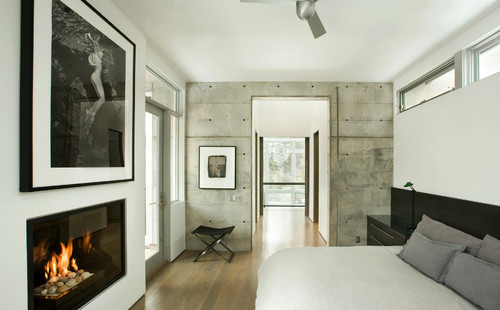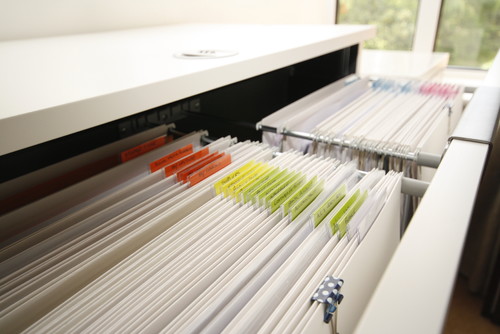Design Dilemma: 5 Tips to a Clean Spring
The itch begins in mid-March. As the days get longer and brighter, there is an urge to refresh, renew and toss. The goal is something clean and pared down. Restful and spacious. And in the kitchen, we want to see (and use!) the countertops again!
A dream kitchen drawer might be as convenient and organized as this:
So how do we get to this? Decluttering and organizing has become of intense interest these days, perhaps a reflection of a consumerist culture where people tend to buy and own too much. There’s a real reason why Japanese decluttering expert Marie Kondo has become world famous. After a few trips to the big box store where you can pick up things in bulk, you quickly find your closets chock full of things you never use. And for those of us who are not used to the idea of editing our possessions from time to time, the result can be suffocating, a home in which nearly every once-functional space is taken over by rarely used objects. At that point, our objects OWN us! To help you get organized this Spring, we’ve pulled together a few tips which can help you reclaim your home from chaos.
- Discard first.
According to Marie Kondi, the Japanese decluttering wizard, organizing requires that you discard unused, outworn, or broken objects first. She suggests that we begin with clothes since clothes and shoes are what we buy most frequently and they quickly run amok. Kondi suggests tossing anything that does not bring you a “spark of joy.” We agree with this, but for those who have difficulty actually knowing what they like and don’t like, we suggest tossing items that are clearly ready to go — socks with no mates, pants that don’t fit or never looked good, worn-out sneakers, that Christmas sweater your Aunt Mary gave you that you never liked. For anything not worn out, fill up a bag to donate to charity. Kondi suggests that for maximum effect, you clean out everything in one fell swoop, but in circumstances where a house is particularly large and cluttered, it makes more sense to bite off little chunks at a time — the coat closet, the shoe rack, the linen cabinet.
2. Learn how to fold clothes.
It sounds silly, but learning how to fold clothes properly can make a huge difference in how much your drawers can contain and also in the sensation of order in your closets. Kondi suggests folding clothes into neat little packets that stand up on end. This allows you to store your clothes vertically, which, in turn, allows you to see everything you own, every time you open a drawer. Knowing what you own prevents you from running out to buy a new black sweater when you somehow can’t find your seven other black sweaters. Google “KonMari Folding Method” to see a video on how it’s done. It works!
3. Focus on documents and papers.
Aside from clothes, the other problem area in most homes seems to surround the home office. Flyers, bills, important documents and store coupons, when not pruned daily, quickly turn into a tsumami of paper. There are a few simple solutions to this. First, find what is important — birth certificates, marriage certificates, wills, leases, insurance papers, warranties, tax returns. Keep them in one place — in an organized fire proof strong box. Knowing where all the important things are, frees you up to toss what’s not, which is nearly everything else. Old flyers, magazines, coupons, can be tossed immediately. Most paid invoices and credit card statements you can toss, unless you need to hang onto them for tax purposes. Store documents vertically, in labeled, divided binders where you can easily find what you need when you need it. Eliminate all piles.
4. Devise a place for everything.
Your home will continue to be and feel cluttered until you find a dedicated space to store things. Once you have that space, use it! If you followed the very first step of discarding the unnecessary, you should have no trouble finding a little extra space in cupboards, drawers and closets to store things that had once spilled out of all those things. Once you see how easy it is to find things when you need them, you will continue to use that dedicated space, and your problem with clutter will be solved.
5. Adjust your attitude.
Once you’ve begun the decluttering process, you will notice something strange. You will feel clearer, more energetic, inspired to tackle new challenges and focus on areas of your life that perhaps went neglected. You may be inspired to begin a new fitness or beauty routine, or to spend more time with a hobby. You’ll also discover that you will love your home more. You will find it more usable, and find it easier to find the things you need. You will notice that you buy less, because you can see everything that you have at once, and you realize, you have plenty. After a period of living with less clutter, you will find even more clutter you can toss, and you will embrace fully the ideally of living simply — only with as much as you need and use and nothing more. It’s a really, really great feeling!
A few more decluttering tips:
- Toss only your own stuff. If family members see the progress you make in putting your own closet in order, they are likely to get inspired to do the same!
- Don’t let junk mail collect. The day it comes in, toss it directly into the recycling bin.
- Go paperless. Most regular bills can now be delivered online. And you should sign up for automatic deductions and online bill pay too.
- Don’t get trapped by objects designed to organize. You actually need to buy very little to get organized. In most cases, objects designed to help you organize just create more clutter.
- Don’t use plastic bins. Instead, if you need extra storage for your closet, invest in plastic drawers that pull out. Plastic bins with a lid on top are hard to access and lead to more clutter in the long run when you can’t find things.
- Make things easy to put back. When deciding how to store something, make it a cinch to put it away.







Leave a Comment